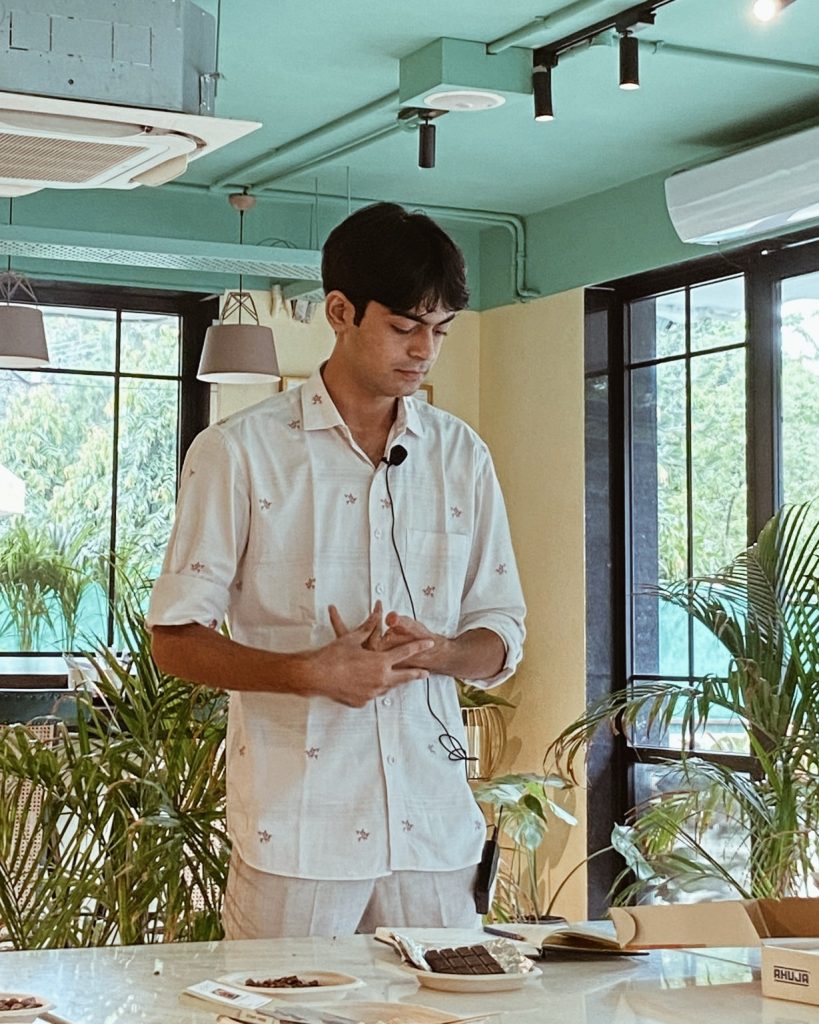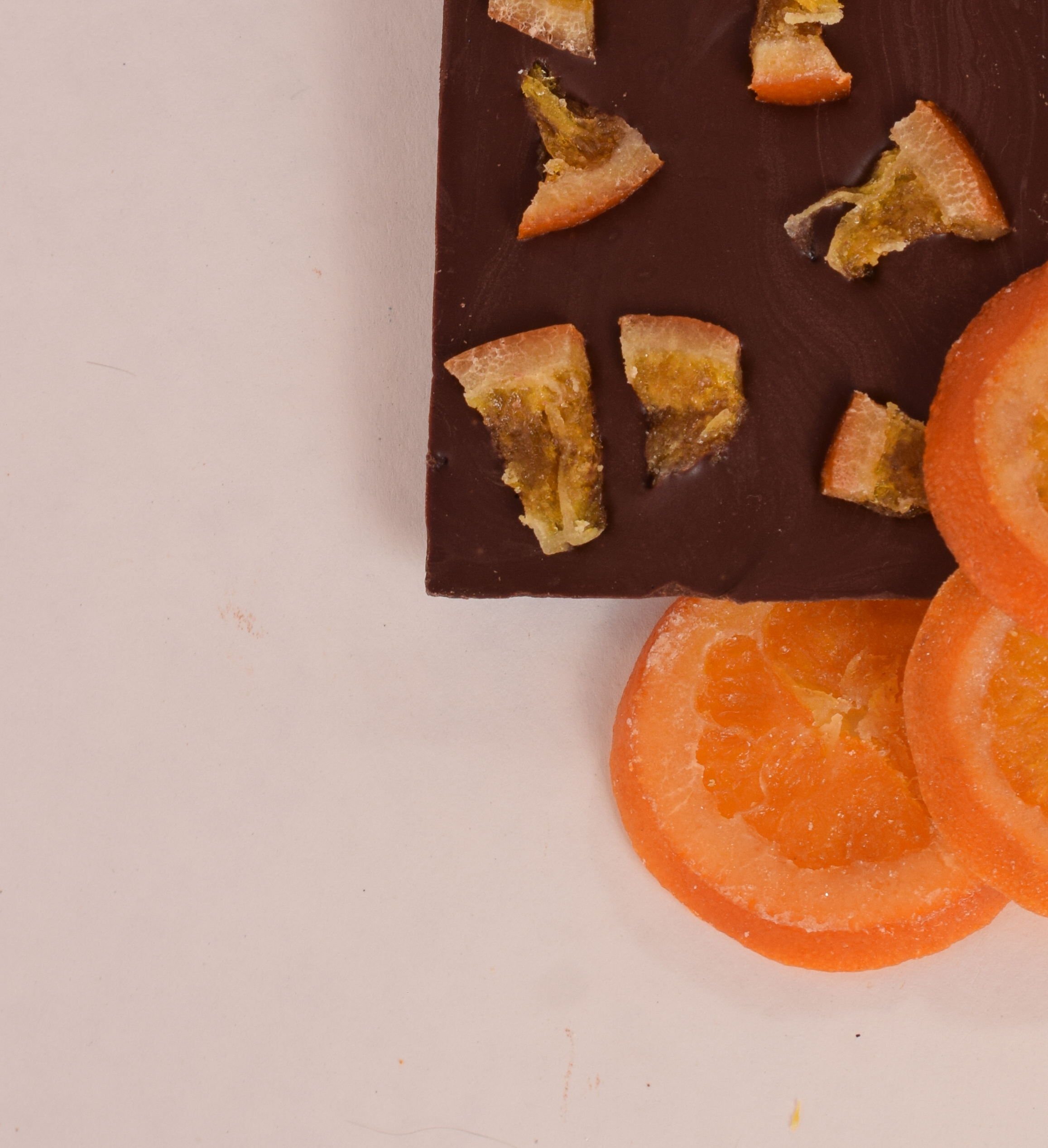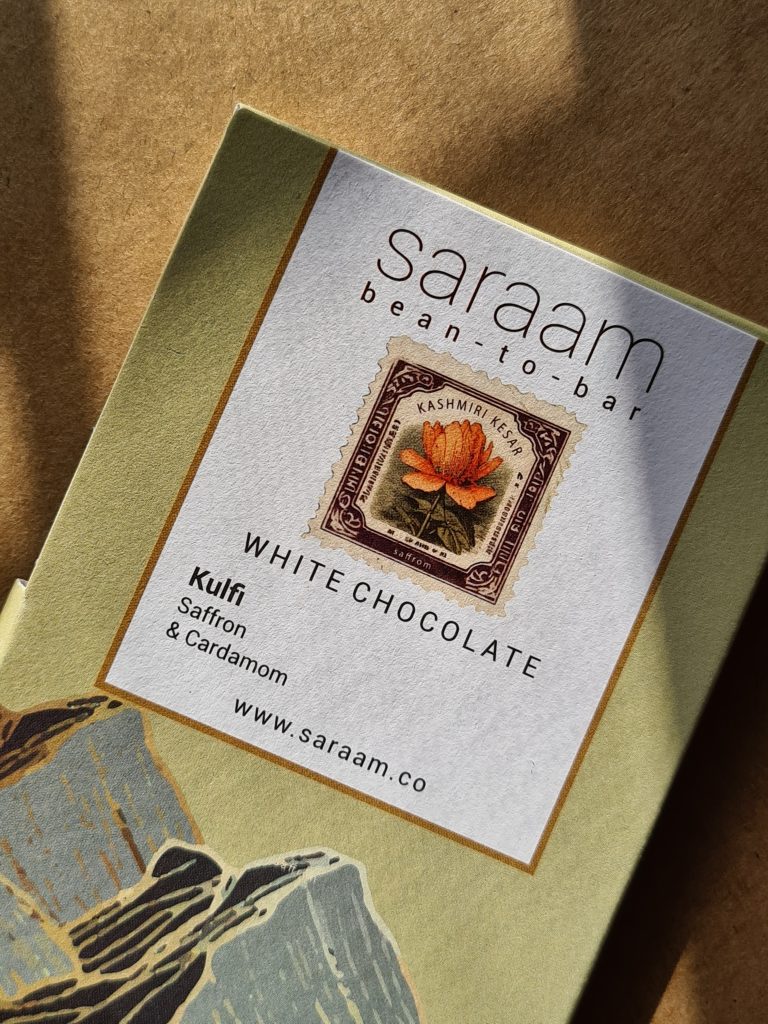(February 27, 2024) Getting off the Chapora Fort on his maiden trip to Goa in 2022, Digvijay Singh saw a woman selling sherbet. Exhausted from his day trip, he decided to quench his thirst with a kokum sherbet – a native fruit of Konkan he had never heard of. Taking his first sip, the teen chocolatier realised that it could be paired very well with dark chocolate due to its tartness. A few months later, he stumbled upon a rose apple in Kolkata, which natives refer to as gulab jamun. “I thought, I know of cranberry or strawberry or macadamia nuts which have perhaps nothing to do with India but I know nothing about the fruit that grows in the Konkan belt which is hardly 1000 kilometers from where I live,” the Udaipur resident tells Global Indian. This epiphany led him to bring indigenous berries and fruits into the conventional world of chocolate making with Saraam – a homegrown artisanal chocolate brand.

Finding the real deal in exotic native fruits
With the chocolate market almost saturated with flavours like cranberry, orange, and hazelnut, Digvijay saw an opportunity in the often-overlooked native fruits. “The biggest issue is that the people haven’t invested in the supply chain of these fruits as they don’t have a long shelf life. People don’t grow them anymore and they are at the mercy of the wild. There are a few collectors who collect and sell them,” explains the 19-year-old who is ready to change the game. “India has long overlooked what’s within and it’s time that we look inwards,” adds Digvijay, whose brand sells Kulfi and Orange & Coffee chocolates.
However, the teen chocolatier was aware that such a drastic combination might call for strong reactions.” Some chefs thought it was blasphemy to make such combinations but to me that suggested the strong personality of the product,” says Digvijay, adding, “I’m not disregarding their experience or their opinion but if you have been institutionalised long enough with French culinary school, and you have seen what works and what’s demanded, it becomes difficult for you to give different options a chance. On the other hand, because of this push and pull, there was a great pull towards the other end where people find such combinations intriguing.”


Saraam chocolate
In just two years, Ber and Kulfi have become their bestsellers which sell a lot more than coffee and orange flavour. “There are people who are ready to try new flavours out of curiosity, and they have already taken the bet by trying a new brand,” says Digvijay who started making chocolate at the age of 16.
Learning chocolate making during the pandemic
When the entire world was locked indoors during the pandemic, Digvijay was keen to start his “gig” and googled recession-proof industries. Apart from edtech, it was chocolate that popped on his screen. “Since I hardly know about technology and less about education, chocolate was something I wanted to try. I started reading about it and even tried a lot of fine chocolates. This got me thinking that it can be a lot different than the artisanal chocolates we find in the country. This idea led to Saraam – which means essence in Sanskrit and Tamil.”
A few months later, his cousin Mahaveer Singh joined, and now the two run the venture which began taking shape with the help of YouTube tutorials. Calling it a great start for beginners, their biggest learning came from experimenting and sampling chocolates. “I wouldn’t have waited to get a diploma to start making chocolate. I don’t think people should wait for an institutional validation to start a venture, as any source of learning can be good enough for a start,” says the teen who consulted with many chefs.


Ask him if making chocolate is an easy or complex process, and he quips, “How we make chocolates is different from how Amul or Cadbury’s make as theirs would be much more standardised and easier as their recipes are set and they have got big machines. Small manufacturers like us use a wet stone grinder, which is a humble idli grinder from Coimbatore modified into a chocolate melanger of sorts.” He adds that it’s quite tedious to make chocolate on this small scale because of the precision it requires. “As there are only a few steps to follow, you can go wrong at many steps – be it sourcing or roasting. Since it doesn’t have any additives, it can also get affected by the odours around it during storage.”
Getting the attention in India and abroad
Five months into learning the art of chocolate making, Saraam bagged its first order from a car dealership after he pitched the idea of customising their packaging for marketing. “I knew we didn’t want to grow on that but it could be a good strategy to begin with. Finding first customers in a category that’s competitive with many similar-looking chocolates in the market, we knew it would be an uphill task,” says Digvijay. Despite being a new brand that works out of the basement, Saraam got tremendous attention from artisanal chocolate lovers in India and abroad. “We were not equipped enough to leverage the kind of attention we got from the NRIs in the US and UK as we weren’t equipped enough to deliver it to them. Many people wanted to try it in the stores in their cities, and we couldn’t do it,” says the teenpreneur who is keen to solve the functional and execution problems.


Saraam sold 20,000 bars of chocolate in 2023, with most of their sales happening during the festive and wedding seasons. “We sell it online, through selected retailers, and send it to a few hotels.” The homegrown brand sources its cacao from small farms in Kerala and Tamil Nadu, but finding exotic fruits is a challenge. “We have found a few collectors and dehydrators who provide us with the fruits,” reveals Digvijay, who is studying Philosophy (H) at Delhi University.
A global brand in the making
Three years into chocolate making, Digvijay has plans of revolutionising the chocolate market and is keen to make something in confectionery that comes especially from India. “We haven’t scratched that surface and I think India does have a potential as we grow our cacao.”
View this post on Instagram
Ever since its inception, Digvijay has seen Saraam as a global brand. “It doesn’t mean we have stores in 200 countries but it’s a brand that has global appeal and people anywhere in the world have desires to consume it. There are 4.4 million NRIs and yet are underserved in terms of things that come from India. I want to take Saraam to them,” says the teenpreneur who believes the revolution in the chocolate industry is yet to come. “I do look at its global consumption – through online fulfillment or physical presence. This is for the Global Indian rooted in India story,” he signs off.




